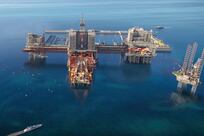Demographics experts have questioned research showing that Dubai's population grew 7.6 per cent last year. The Government said it compiled the figures by extrapolating data from 2000 and 2005 census numbers. But outside experts said those statistics would not reflect the impact of the financial crisis that hit the emirate in 2008.
"It's pretty standard for countries to use census statistics with some small sampling in between to estimate population," said Paul Dyer of the Dubai School of Government. "But the more rapidly your economy changes, the less accurate your statistics are going to be." The Government reported that Dubai's population grew from 1,645,973 in 2008 to 1,770,978 in 2009. Those numbers went against widespread speculation that Dubai had seen an exodus of expatriate workers because of the financial crisis.
David Butter, the regional director for the Economist Intelligence Unit, a private research and analysis firm based in London, said it was "impossible to speculate" on population numbers without a full census. "The difficulty is always that you can't be quite sure how reliable the statistics are," he said. Afaf Buassaiba, the director of the population and statistics department at the Dubai Statistics Centre, said the figures were calculated using an internationally accepted formula that took into account growth between the 2000 and 2005 censuses.
"There is stability, the rate has not changed, the workforce is still here," she said. "On what basis to they say there is a decline?" Still, the centre said it may revise its growth rate figures when a new census of some Dubai neighbourhoods is completed by the end of the month. These statistics will likely be released at the end of April. "Will we alter this growth method or will it stay?" Ms Buassaiba said. "There are areas which were not counted before and others whose population changed. Then we can know what truly happened in the emirate."
Ms Buassaiba defended the DSC's methodology, saying the growth rate between 2000 and 2005 was more representative because the economic boom associated with the construction industry took hold after 2005. She also said the figures do not include labourers who live in camps outside the emirate, or Dubai-based workers who live in other emirates. The DSC did not have figures for visas issued or cancelled in 2009.
Mr Butter said the formula may not have taken into account enough factors. "If you are looking at a previous period and then overlaying the trend, then the figures are suspect. You have to look at all sorts of different variables," he said. Mr Dyer said the growth rate did not sound wrong, but the statistics probably failed to consider a dip in the population as the crisis hit. "Living here during the downturn it felt like the population had declined significantly, but all the information was anecdotal," he said. "The new numbers don't really mean that didn't happen."
@Email:kshaheen@thenational.ae lmorris@thenational.ae






